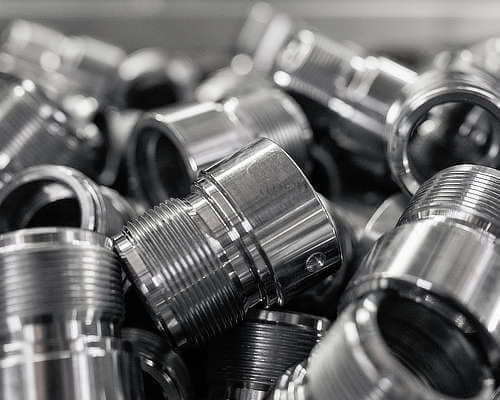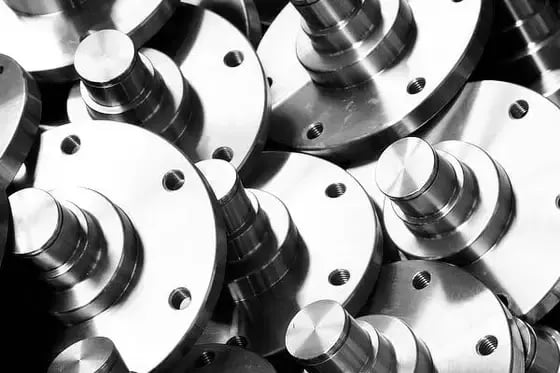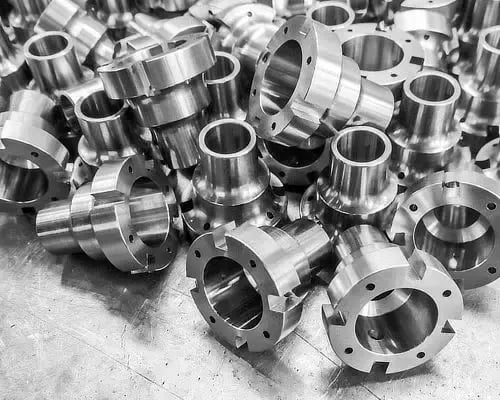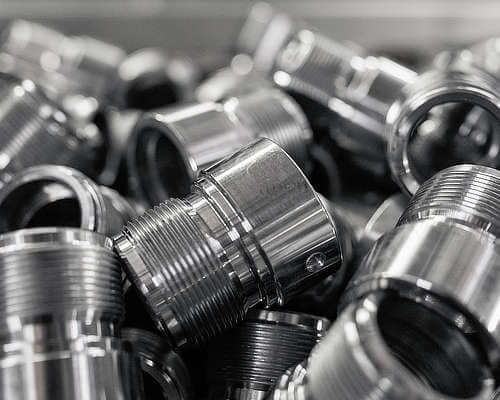6 min read
3D Printing and Nanotechnology
3D printing and nanotechnology are two fields of research and innovation that, at first glance, might appear worlds apart. The former focuses on...

Steel is such a powerful element, coming in several distinct grades and holding unique chemical compositions. Now, with steel properties and the different steel alloys being so vast, it might be shocking to realize that all kinds, even CNC machining steel, is composed of just two things: iron and carbon.
However, the real difference begins when additional carbon and alloying elements come into the picture. You see, steel's durability and strength are determined by those added aspects (such as manganese and phosphorus) that are introduced during its formulation, and is what determines its category for specific applications. So, if you are here wondering what type of steel to buy for your particular needs, you must understand the chemical structure of the physical steel properties, which are broken down into four foundational types.
Carbon steel looks dull, matte-like, and is known to be vulnerable to corrosion. Overall, there are three subtypes to this one: low, medium, and high carbon steel, with low containing about .30% of carbon, medium .60%, and high 1.5%. The name itself actually comes from the reality that they contain a very small amount of other alloying elements. They are exceptionally strong, which is why they are often used to make things like knives, high-tension wires, automotive parts, and other similar items.
Fact: Carbon steels make up about 90% of all steel production.

C45/AISI 1045 steel is a medium carbon steel suitable for parts such as gears, bolts, general-purpose axles and shafts, keys and studs. Quote instantly your carbon steel part
Next up is alloy steel, which is a mixture of several different metals, like nickel, copper, and aluminum. These tend to be more on the cheaper side, more resistant to corrosion and are favored for some car parts, pipelines, ship hulls, and mechanical projects. For this one, the strength depends on the concentration of the elements that it contains.

AISI 4317/18NiCrMo5 alloy steel: high core strength and toughness, heavy duty bearings, cam followers, clutch dogs, compressor colts, fan shafts, heavy duty gears, pump shafts. Quote instantly your alloy steel part
Tool steel is famous for being hard and both heat and scrape resistant. The name is derived from the fact that they are very commonly used to make metal tools, like hammers. For these, they are made up of things like cobalt, molybdenum, and tungsten, and that is the underlying reason why tool steel has such advanced durability and heat resistance features.
Last but not least, stainless steels are probably the most well-known type on the market. This type is shiny and generally has around 10 to 20% chromium, which is their main alloying element. With this combination, it allows the steel to be resistant to corrosion and very easily molded into varying shapes. Because of their easy manipulation, flexibility, and quality, stainless steel can be found in surgical equipment, home applications, silverware, and even implemented as exterior cladding for commercial/industrial buildings.
Fact: There are over 100 grades of stainless steel, making it an incredibly versatile, customizable material.

Stainless steel 316L: suitable for heat exchangers, pipelines, materials for exterior construction in coastal areas, watch bracelet, case, etc. for advanced watches, equipments for the use of marine, chemicals, dyes, food industry. Quote instantly your stainless steel part
Steel grading is very often used by engineers, scientists, architects, and even government agencies to solidify their confidence in the consistency and quality of the materials.
In 1967, the world made only 500 million tons of steel. However, in 2016, that number rose to over 1,600 million. In addition to that, according to The World Steel Association, 55% of a typical car’s weight is a result of steel. With this reality, it is hard to imagine a world without steel in it. With more than 3,500 different steel grades, the possibilities for its usage are seemingly endless for what it can do. From manufacturing, fabrications, to CNC machining steel, each type has its perfect place and characteristics to accommodate just about every need.
In the end, the different steel properties stem from using different steel alloys and break down to the four types that we see today. So, if you are thinking about purchasing steel, take the time to nail down the ideal steel properties you need and the right grade to handle the job you are seeking to accomplish. You will thank yourself by doing this now instead of finding out you selected the wrong one later.
Sources and further reading
https://www.meadmetals.com/blog/steel-grades#:~:text=The%20Four%20Types%20of%20Steel,elements%20besides%20carbon%20and%20iron.
https://www.metalsupermarkets.com/types-of-steel/
https://www.thoughtco.com/steel-grades-2340174
https://en.wikipedia.org/wiki/Tool_steel#:~:text=10%20Bibliography-,Water%2Dhardening%20group,having%20to%20be%20water%20quenched.&text=The%20toughness%20of%20W%2Dgroup,grain%20sizes%20during%20heat%20treating.
https://www.worldsteel.org/media-centre/press-releases/2017/world-steel-in-figures-2017.html
https://www.etf.com/sections/features-and-news/1289-cars-and-metal-metal-and-cars?nopaging=1&__cf_chl_jschl_tk__=3a8ca3d4790939c87c877dcfb2e55cd6233860cb-1600380671-0-AasJiDTBvhrkbY9YZHsDpzuaM-dpqbZOVjFpgmW-THnSW1enoB8aJgcv3id1B0g8hsOA_W0Cc5nUrnMnODkbsm64bthN-EhygbGpib0cUoZBi-O_iSX3sjZYrmoQEqq0KDXlKO2iscWjgPnCnFLvhiRpIs2RRmmSExzW3VEz51em5wiYtKsVO2ZWvx7Px8hkvbhBU-IJtpkrPSQy_qK_hZcjiu14ZPKEukYBqWLBpy_b6jJyx3ToAjECPcBiKrUDUte13WCLcBqdj4u_-9HBsQSNNC_uJo7qsMCmazJ0ATdkhJDAM2zMBsqhxeqxr8cFo-TsOAFrjrya4VJ4_rGhqgiGlrdSbSshIyyZ-WxEqIq45nob3TtucY8kQnhmLjSEfLGXwnVHfMytHPSXgsdk-XCDhHqPuvJMfa6GTvDlDUAvvaj1xFZBYWF42R_0aBCKlw
https://en.wikipedia.org/wiki/Steel#:~:text=Carbon%20steels,-Modern%20steels%20are&text=Carbon%20steel%2C%20composed%20simply%20of,the%20hardenability%20of%20thick%20sections.
http://www.osstainless.com/resources/articles/stainless-steel-grades.php#:~:text=There%20are%20over%20100%20grades,chromium%2C%208%25%20nickel

6 min read
3D printing and nanotechnology are two fields of research and innovation that, at first glance, might appear worlds apart. The former focuses on...

6 min read
Padel has seen exponential growth in Italy and worldwide in recent years. A glance at sports clubs in major cities and smaller towns alike reveals an...

6 min read
The game of chess boasts a history spanning millennia, seamlessly merging art, strategy, and culture into a singular experience that has captivated...